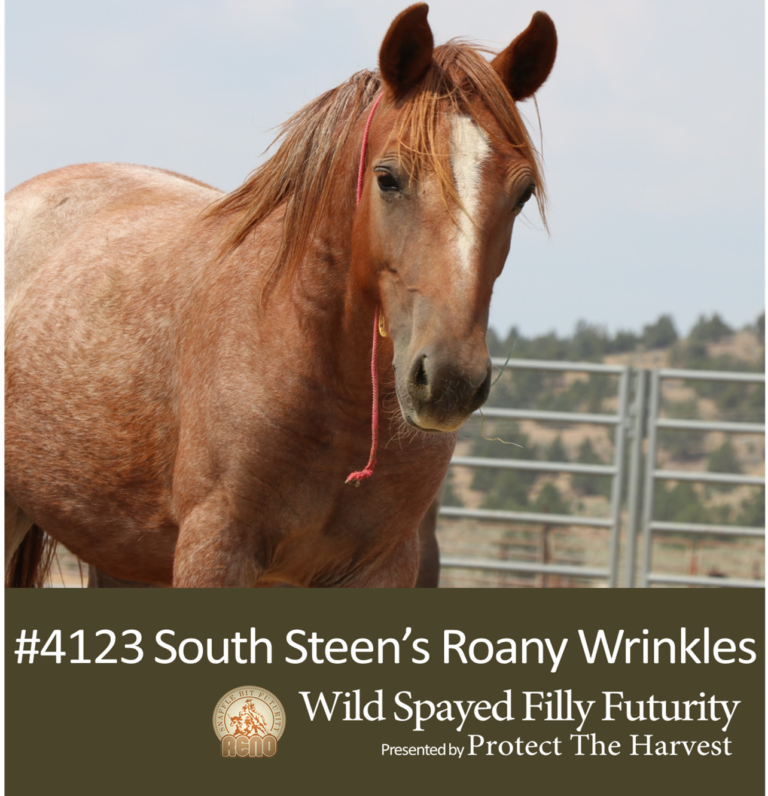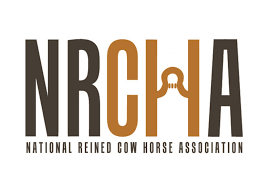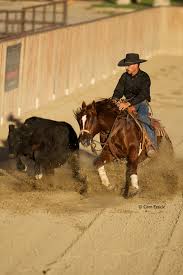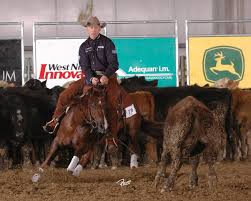2018Wild Spayed Filly Event

Protect the Harvest presents the First Annual Wild Spayed Filly Futurity:
Twelve selected fillies were sold at the 2017 Reno Snaffle Bit Futurity and are invited back to the 2018 Reno Snaffle Bit Futurity to compete in their own division, with 25K to the winner. The fillies were selected from the Three Fingers, South Steen’s and Beaty’s Butte herds. At the time of the sale all of the fillies were spayed, vaccinated and handled for 30 days.
Goal
The goal of the Wild Spayed Filly Futurity is to showcase the significance and abilities of these resilient, tough and beautiful horses. It will also demonstrate their trainability and hopefully encourage more people to consider a horse from our American rangelands. A second and very important goal of the program is to help find economical, safe solutions in controlling the numbers of horses on American rangelands which will allow people to appreciate them in a healthy, balanced environment in the wild.
Follow the Fillies
To follow the fillies progress and learn about the trainers that are working with them, make sure to check the Reno Snaffle Bit Futurity Facebook page and on our website under each individual filly’s name.
For more information, please visit the Protect the Harvest Website:
http://protecttheharvest.com/meet-the-fillies/



OVERVIEW:
The Wild Spayed Filly Futurity is a special event held in conjunction with the Reno Snaffle Bit Futurity. The ten select fillies that are sold at the 2017 Reno Snaffle Bit Futurity are invited to come back in 2018 to compete in their own division.
A Snaffle Bit Futurity for young reined cow horses is the ultimate test of horsemanship, training and athleticism. Horses and riders compete in three events:
- Herd Work
- Rein Work
- Cow Work
Horses are judged for each event and their cumulative score (herd + rein + cow) determines the winner and other placings.
During the Wild Spayed Filly Futurity, there is only one go round, there are no preliminaries.
This is a brief overview of the events and scoring. The Wild Spayed Filly Futurity follows National Reined Cow Horse Association (NRCHA) rules. For detailed explanations and rules information, please refer to the NRCHA Handbook: http://nrchadata.com/pdf/news/2017/2017NRCHARuleBook-web.pdf
SCORING:
The horse and rider start out each event with a score of 70 points per judge. A score of 70 points demonstrates an average, competent run. The horse and rider may earn or lose points depending on a variety of factors.
There are 5 judges at the Reno Snaffle Bit Futurity. While there are 5 judges evaluating the performance of the horse and rider, only the scores from 3 judges will be tabulated for each event. The high score and the low score are eliminated.
For example; in the rein work portion of the event, a horse and rider team could have an excellent to above-average performance and scores of 74, 73.5, 73, 73.5, 73.5 respectively from each judge. The 74 score and the 73 score will be eliminated; only the three middle scores of 73.5 will be tabulated. This would give the horse and rider team 220.5 points for the rein work portion.
As outlined previously, this scoring system applies to all three events; herd work, rein work and cow or fence work. Therefore, the determination of the overall winner will be the combination of the scores from the herd work, rein work and fence work.
EVENTS EXPLAINED:
Herd Work (Cutting)
The herd work event demonstrates how well a horse can cut a cow out of a herd and keep the cow that was cut from returning to the group.
The event takes place with a herd of cattle in a pen, the horse and rider, and “turnback” or herd help. These additional riders help to hold the herd and assist the competitor.
The horse and rider are given 2 ½ minutes to demonstrate that they can “cut” a minimum of two cows away from the herd. The class starts with the horse and rider slowly entering a large group of cattle. Once the horse and rider have entered the herd, they make what is called “the cut”. They select a cow to drive out away from the rest of the herd. There are a variety of ways in which the horse and rider accomplish this task, one is where a number of cows are pushed out away from the main herd, gradually allowing all but one to “peel off” and return to the herd.
Once the cut has been made, and only one cow remains, the horse and rider will “work” the cow. The goal then is to keep the single cow from returning to the herd. Once the horse and rider have demonstrated that they can successfully keep the single cow from returning to the herd, they will “quit” the cow and turn back to the herd to select a second cow.
Scoring Herd Work
Each horse and rider start out with a score of 70 points per each judge. A score of 70 points demonstrates an average, competent run. The horse and rider may earn or lose points depending on a variety of factors. Scores above 70 show good to excellent work. Judges reward horse and rider teams for degree of difficulty, control and position on the cow, style and overall eye appeal. Points are deducted for a variety of reasons including, not maintaining control of the cow at all times, losing control of a cow, or a cow returning to the herd.Rein Work (Dry Work)
The rein work, often also called “dry work” is the portion of the competition where the horse and rider complete a pre-determined pattern in the arena demonstrating their ability to complete a number of maneuvers. The patterns consist of loping large fast circles, loping slow circles, lead changes, run downs and sliding stops and spins.
The NRCHA provides 12 patterns for competition. Prior to the event, the judges will select a pattern from the group of 12 in which all of the fillies will demonstrate. There are markers in the arena indicating center points and end points. The patterns will call out for maneuvers to be completed based on these markers. Link to NRCHA Rein Work patterns: http://nrcha.com/2017-nrcha-patterns/
Scoring Rein Work
Like with the herd work, all of the horses start this portion of the competition with a score of 70. A score of 70 points demonstrates an average, competent run. The horse and rider may earn or lose points depending on a variety of factors. Scores above 70 show good to excellent work.
The horse and rider must complete the pattern as written. For example, if the pattern calls for a run down and stop to be completed “past the end marker” the horse and rider team must go past the marker. Stopping before the marker will result in penalty points. Another example regarding markers relates to lead changes on circles. Complete lead changes in the patterns are to be executed at the center marker. Changing leads or completion of a lead change past various markers on the circle will result in penalty points based on a scale.
Failure to complete the pattern as written, for example, spinning the wrong way, or under or over spinning can result in a -0- or “no score”.
Cow Work – Fence Work
The cow work portion of the event demonstrates the horse and rider’s ability to control and maneuver a single cow in the arena. The cow will be “boxed” on the short wall of the arena demonstrating control. Once the horse and rider demonstrate control of the cow on the short wall, they will drive the cow down the long fence, and complete a right hand turn and a left hand turn. Once the right hand and left hand turns are complete, the horse and rider circle the cow once in each direction.
Scoring Cow (Fence) Work
Like with the herd work, all of the horses start this portion of the competition with a score of 70. A score of 70 points demonstrates an average, competent run. The horse and rider may earn or lose points depending on a variety of factors. Scores above 70 show good to excellent work.
The markers in the arena are also used for the fence work. On the first turn down the long fence of the arena, the horse and rider must drive or stay with the cow (also called “rate”) past the center marker in the arena before they can execute their first fence turn. In this portion of the run, turning on the fence before the center marker will result in penalty points.
There are also markers at the end of the arena and another marker just before the corner. Ideally, fence turns are made somewhere after the cow is driven past the center marker and before it reaches the first end marker. The horse and rider team will incur penalty points for missing markers or using the corner of the arena to turn the cow. Horses and riders are rewarded for degree of difficulty, bravery and control of the cow.
NOTE – READ THE EVENT SCORING RULES!:
Please note, we have given a brief, basic overview of some of the high points of each event and the scoring. If event competitors are not familiar with NRCHA rules, please make sure to carefully read through the rules and scoring.
NRCHA Handbook: http://nrchadata.com/pdf/news/2017/2017NRCHARuleBook-web.pdf